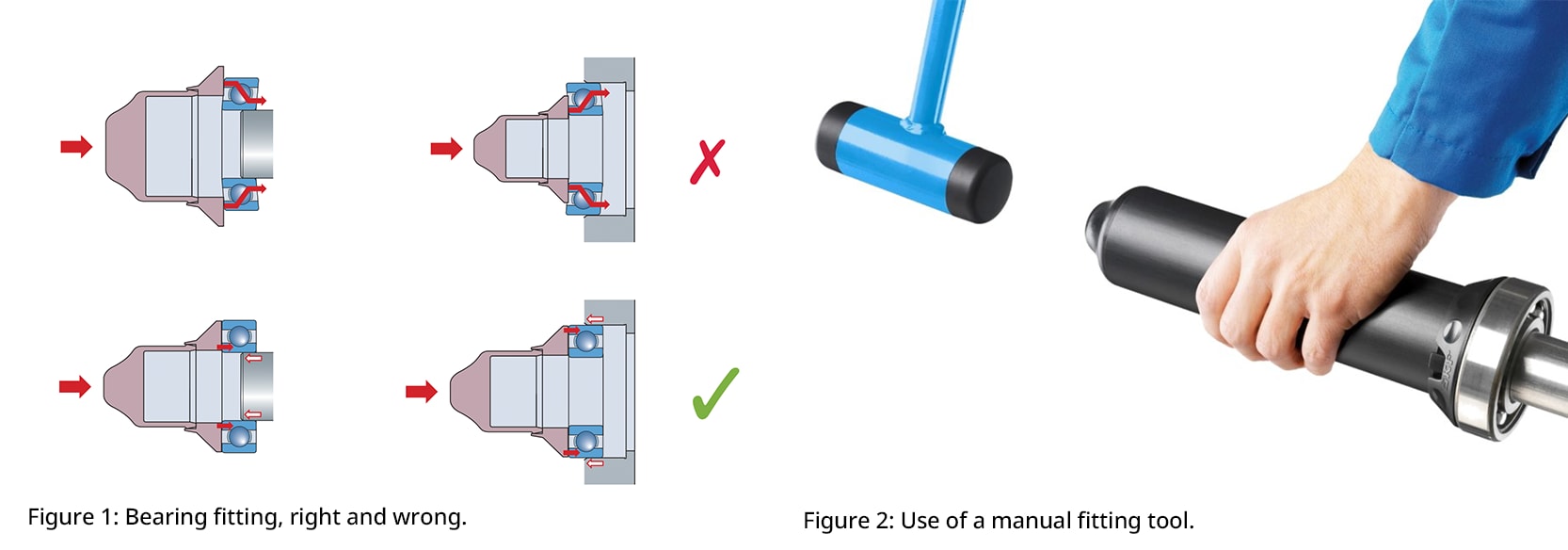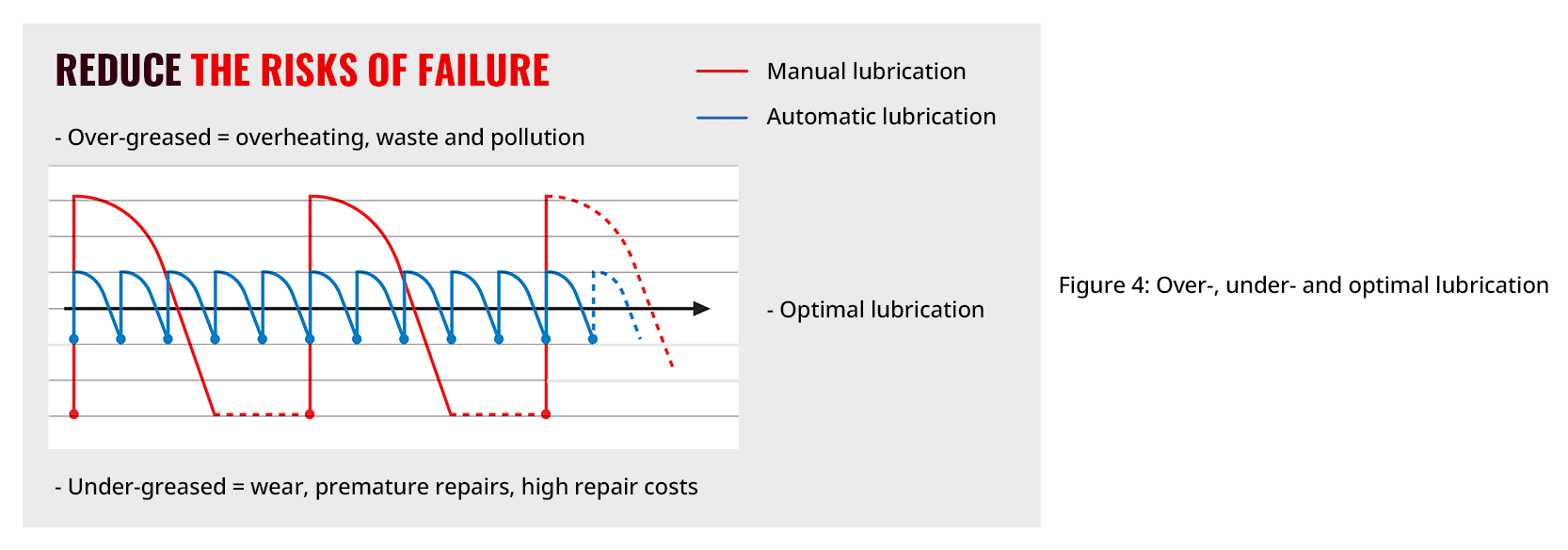Mounting
16% of premature bearing failure is due to poor mounting of the bearing. Correct installation not only ensures the good running of the machine but often reduced energy consumption as well.
If force is applied to the wrong part of the bearing, damage will result. See figure 1. The use of the correct mounting equipment is vital to ensure the correct fitting of the bearing, without such damage and to ensure maximum life.
For correct cold mounting, to avoid impact damage use the correct manual fitting tool for the bearing. See figure 2.






